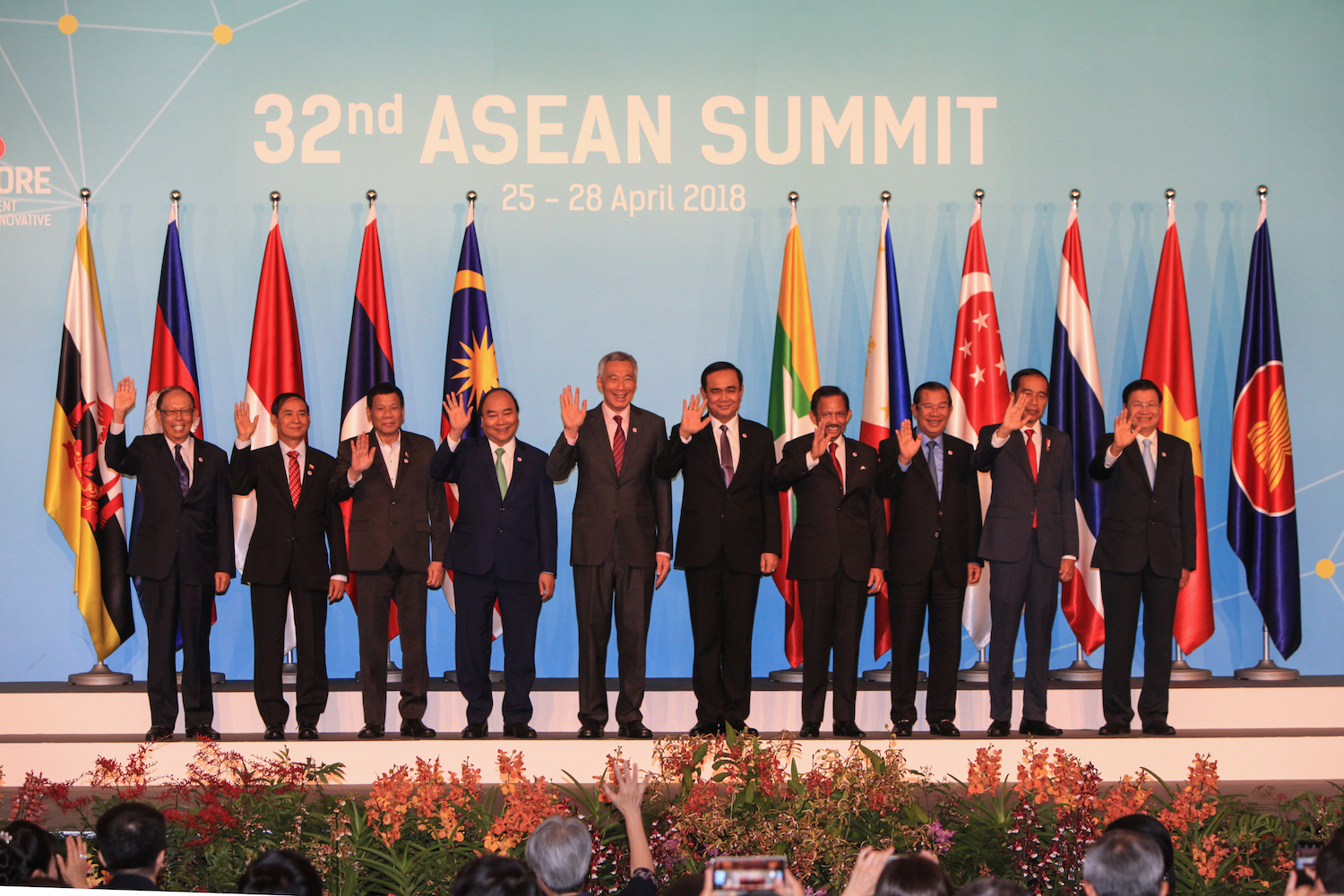Publications
The Security Agenda in Singapore’s ASEAN Chairmanship
- Details
- Written by: Florence Principe Gamboa and Julio Amador III

Photo from asean2018.sg
Singapore as ASEAN Chair
The Philippines was the center of attention of the international community last year when it assumed a significant role as that year’s chairman of the Association of Southeast Asian Nations (ASEAN). Major achievements of its chairmanship that have often been lauded include agreement on the Framework on the Code of Conduct in the South China Sea, and the signing of the ASEAN Consensus on the Protection and Promotion of the Rights of Migrant Workers.
Since November, however, all the attention has turned to Singapore, as Philippine President Rodrigo Duterte passed the baton to Singapore Prime Minister Lee Hsien Loong as the ASEAN Chair for 2018. With the rotating chairmanship, Singapore can now shape the agenda and set the direction of discussions of the regional bloc for the year. Singapore is also the coordinator of ASEAN-China dialogue relations from 2015 to 2018, following which the Philippines takes over for 3 years.
Why Duterte’s China Strategy is Headed for a Free Fall
- Details
- Written by: Aileen S.P. Baviera
In the two years since President Duterte assumed office, we have seen better relations with China due to the decision not to emphasize the territorial disputes and to instead focus on strengthening economic cooperation. In particular, the country’s economic managers have been very gung ho in attracting Chinese investments and contracting Chinese financing to support the administration’s Build Build Build! infrastructure program. Meanwhile, our fishermen have returned to their fishing grounds in Panatag Shoal, the Armed Forces are able to conduct repairs on their occupied features, and not just the optics but the actual atmosphere of political ties have tremendously improved. China is actively wooing Philippine support for its Belt and Road Initiative, even offering to relax immigration controls to allow in Filipino English-language teachers and – possibly in the future – caregivers and household service workers. China has also become the Philippines’ second largest source of tourists.
However, not all is going smoothly and there are strong undercurrents threatening to create new waves of tensions between the two sides.
The Philippines Foreign Direct Investment Boom: Comparing China with the Rest
- Details
- Written by: Alvin A. Camba

Photo from Creative Commons
In 2017, the amount of foreign direct investment (FDI) in the Philippines increased at a rapid rate, culminating in the so-called “FDI boom” of Rodrigo Duterte’s presidency. One pundit claims that the foreign direct investment (FDI) boom has little to do with China and more with other foreign investors. Countering his conclusion, I argue that such claims underestimate the amount of increases of Chinese FDI in the country, and more importantly, misconstrues the global structure of foreign capital inflows.
Making the ‘Quad’ Work in Southeast Asia and the Philippines
- Details
- Written by: P/ENS Dianne Faye C Despi (PROF) PN *

Photo from US Embassy Manila
The complexity and uncertainty of the current regional security situation in the Asia-Pacific requires a delicate balance of the dynamics between the present superpower and emerging great power – the United States and China – to promote a stable order in the region. Security arrangements are volatile in the sense that once the scale tips in favor of one of the two countries, tensions build up between the great powers. Economic and security cooperation initiatives are interpreted as nothing but attempts to counterbalance each other, and strategic competition overcrowds the arena as cooperation is reduced to being a matter of “who is siding with whom” – a version of the New Great Game moving to India and the Pacific Rim, so to speak.
